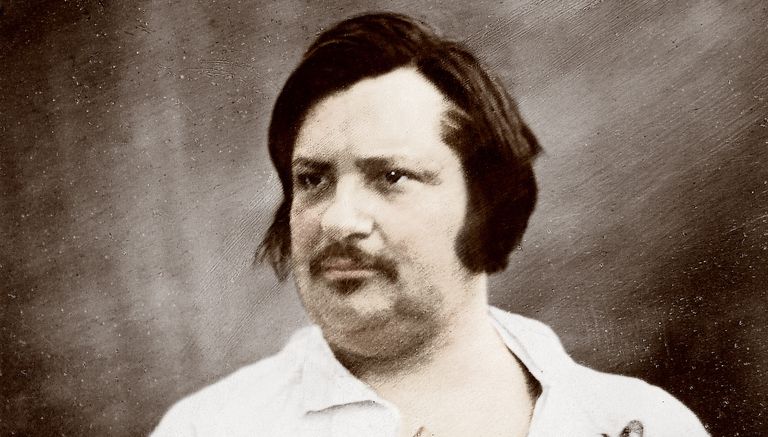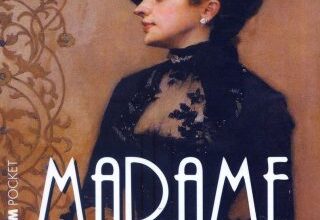Colonel Shaberi by Honore De Balzak

Kolonel Shaberi nga Honore De Balzak

About the author Honoré de Balzac was born in Tours on May 20, 1799. At the age of 8 his mother sent him to study at the Vendôme oratory, where for 6 years he studied many subjects, but also highlighting his talent in literature. He studied at Tours College and then Paris, where he moved with his family. He enrolled in the faculty of jurisprudence, and at the same time worked in a notary office. At the age of 20 he discovered his gift for writing. In a small room in the Bastia neighborhood, alone or in collaboration with Auguste Le Poitev, a commercial publisher, from 1821 to 1829, he wrote popular works, signing them as Horace de Saint-Obe or L & # 39 or de rhoon among which stand out: L & # 39héritié de Bïrag (heir of Birag, 1821), viker des Ardennes (The parish priest of Ardenn, 1821), Argow le pirate (Argow pirate, 1824). In 1822 Balzac met L & # 39; de Bernit, a mature woman who remained close to him until the day of his death (1836). To that woman he dedicated “Le lit de la vallée” (Lily of the Valley, 1835). In 1825 he became a publisher and typographer. At the same time he also bought a foundry but his attempts to trade failed and put him in debt. Again a business endeavor, this time in Sardinia where he tried to bring the old silver mines back to work and in addition tried to trade wood from Poland. Spent dizzying amounts of time, furnishing the house with antique furniture. His life is characterized by futile efforts to get rich and to be a successful man in a very short time. For 20 years he managed to make 90 creations among which there were romances and stories, all these united in a single work entitled “La comédie humaine” (Human comedy) and divided into Sèn dë la vi privé (Scenes of private life), Sèn dë la vi dë provions, Life scenes in the province) Sèn dë la vi parizien (Parisian life scenes). It is an analysis of social and private life in a developing France, the era of the “bourgeois monarchy” of Louis Philippe. The first is a historical romance, Le Shuons (1829), which was inspired by the Vande revolt -se; however it will be his other works that will ensure his success and admiration from the public. Among which we can mention: La po de chagrë (Shegren skin, 1831), Evgjéni Grande (1833), Lë médsë de champagne (Village doctor, 1833), Ilyzio perdy (Lost illusions, 1837-43), Splendër e mizer de kurtisan (1839-47) .Honore was a regular frequenter of salons, and very passionate about both mundane life and the noble women of the various courtyards, which best suited his snobbery. Although he was constantly persecuted by people to whom he owed money, Balzac for some time managed to realize his dream of being a rich man. This came thanks to his love affair with the Polish baroness Eva Hanska, whom he married shortly before if you die. (love with Eva Hanska was just a “salon game” but Balzac never realized such a thing). In 1834 Balzac had the idea to merge all his creations into a single monumental work, a true fresco on The French society of that time from the first empire to the monarchy of July, thus published the famous Human Commedia.Initially the work had to contain 150 romances divided into three main lines: Study of Habits, Philosophical Study and Analytical Studies.The first group consisted of works completed long ago and was divided into 6 scenes which represented life: private, provincial, Parisian, political, military and rural. The novels had to contain about 2000 characters, because his desire was to create a network of confusions between the volumes of Only 2/3 of the project was realized.The most famous episodes are: Uncle Gorio (1834-35), Evgjéni Grande (1833), Cousin Betta (1846), Lost Illusions (1837-1843) .In 1937 realized “La vielle fille” which became the first novel to be published in a newspaper. In 1838 Balzac was distinguished for his fight for copyright. Honor had a very strong willingness to work even though health had begun to become a major obstacle for him. In 1839 he became a member of the Writers’ Society and was elected its chairman the same year. In 1850, a few months after he married Baroness Hanska, Balzac passed away. His love for the Polish aristocrat is best reflected in the correspondence between them which was published in 1968 under the title “Lettre à madame Hanska.






